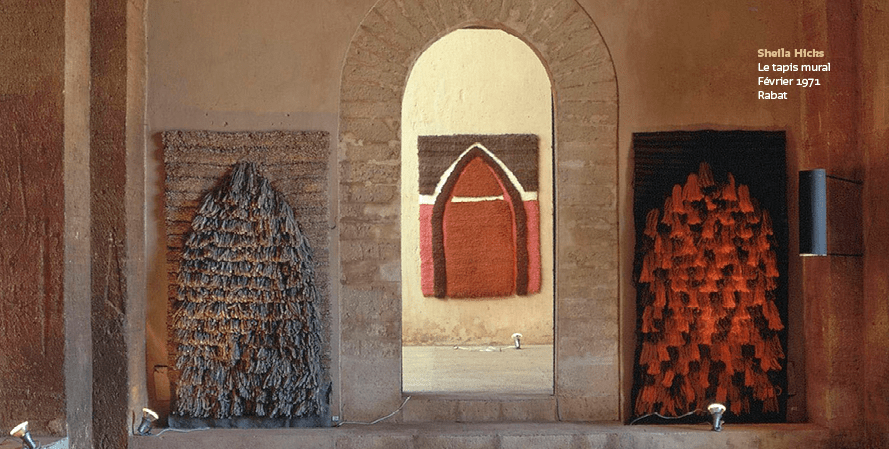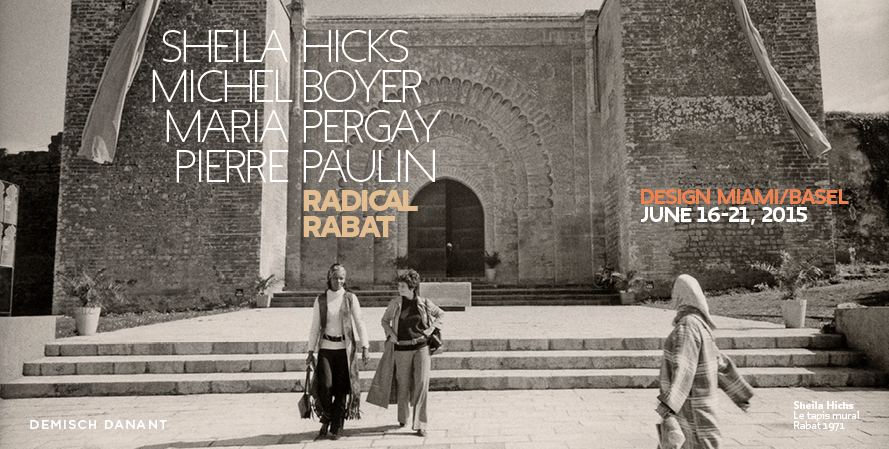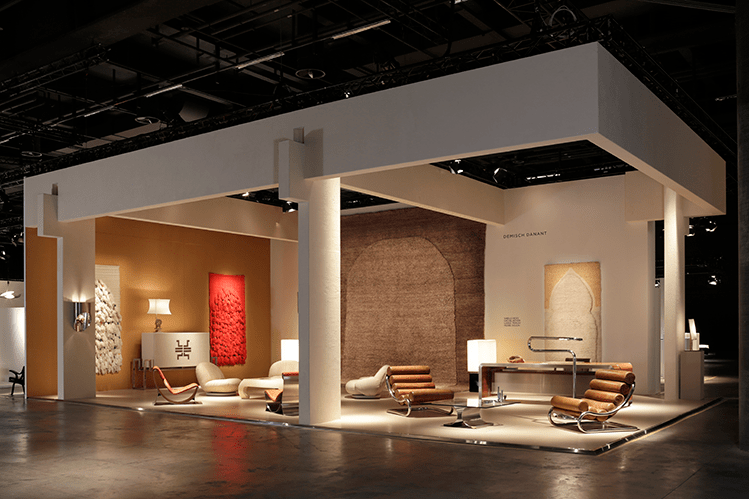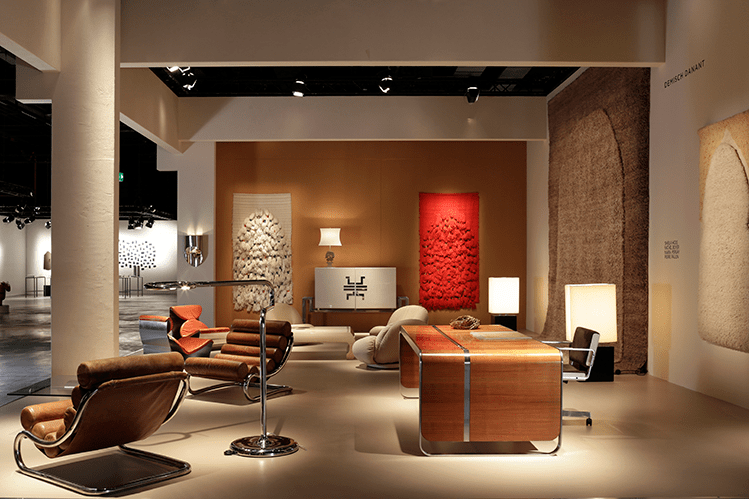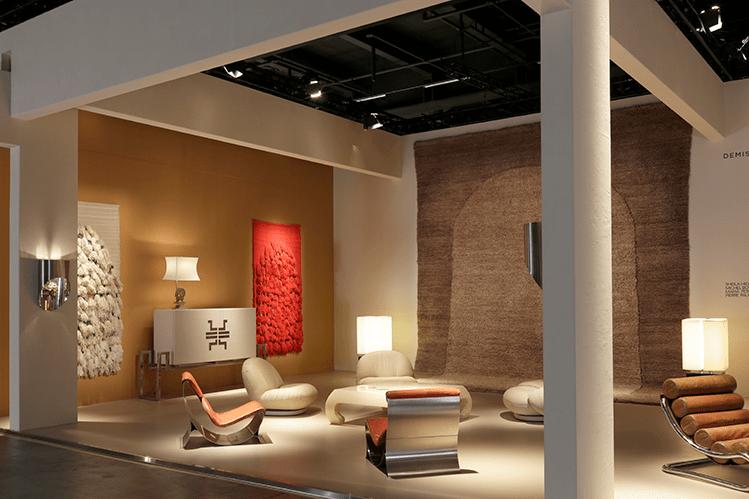Demisch Danant is pleased to announce that it will present Radical Rabat: Nomadic French Style of the 1970s in its stand (G12) at Design Miami/Basel, from June 16 through 21, 2015. The exhibition aims to capture the essence of French design of the 1970s, a period in which designers were particularly influenced by the art, craft, architecture, and nomadic cultures of the Arab world. Radical Rabat brings together rare and important works by Sheila Hicks, Michel Boyer, Maria Pergay, and Pierre Paulin – creators who drew inspiration from both the traditions and international cosmopolitan scenes of such places as Morocco, Algeria, and Tunisia.
In the aftermath of the revolutionary and politicized late 1960s, French designers sought to create unabashedly experimental forms that encapsulated the sensuality and casual elegance of a new decade. As the 1970s unfolded, they became increasingly peripatetic, traveling and working in the Middle East, and immersing themselves in Arab influences. French designers of the 70s began experimenting with longstanding craft traditions beyond the confines of Europe, and referenced the worldliness of the radical chic jet set exploring exotic locales. Low lounge seating and more amorphous forms, combined with new materials and heavy textures, came to the fore and began to symbolize an iconoclastic glamour.
Radical Rabat draws its title and inspiration from Sheila Hicks’ 1971 exhibition Le Tapis Mural at Galerie National de Bab Rouah (Moroccan National Art Gallery) in Rabat, Morocco’s fourth largest city. Recalling the way in which Hicks transformed the museum’s historic interiors with thirty-one new wall rugs made using traditional Moroccan techniques, Demisch Danant will present its exhibition in a Moroccan-influenced living environment including wall works by Hicks.
Since the late 1950s, Sheila Hicks has traveled the globe observing the indigenous weaving techniques that inform her multidisciplinary practice. In the late 1960s and 1970s, she created highly textural, often colorful “Prayer Rugs” inspired by Moroccan and South American weaving traditions. Four of the artist’s “Prayer Rugs” will be on view in Radical Rabat, including a monumental Moroccan-inspired work that rises over eighteen feet high. These iconic objects will be mounted on walls painted with pure pigment interior paints from a collection the artist has developed in collaboration with Demisch Danant.
In the 1970s, Michel Boyer received several landmark interior design commissions that epitomized the highest achievements of French style in that period. Boyer utilized such new materials as molded fiberglass and stainless steel to render new forms. Radical Rabat includes a unique Boyer desk designed in 1970 for Elie de Rothschild’s office at the Rothschild Bank in Paris. An interplay of solids and voids, sleek curved steel and molded wood, make this desk a highlight of Boyer’s career. The exhibition also includes two versions of the designer’s Brasilia Lamp (1974), a marvel of sinuous curves and solid geometry that was designed for the French Ambassador to Brazil.
Maria Pergay presented her first collection of stainless steel furniture in 1968 and is renowned as a pioneer of the material – one of the first figures to apply it to furniture design. A pair of the renowned designer’s curved stainless steel lounge chairs, made in 1970, will be on view in Radical Rabat. Also on view will be rare East Asian-inspired works in lacquered wood that highlight the long-standing influence of historical techniques and Asian influences on Pergay’s oeuvre.
Pierre Paulin created of some of the most iconic seating designs of the 1960s and 1970s. The Pacha Chair (1975), a low-slung, voluptuous lounge chair, evokes the languor of Oriental nobility. The seemingly contradictory combination of relaxed sensuality and high refinement in such objects was a significant trait of French style of the era. A group of four Pacha Chairs will be on view in the exhibition.
Through this selection of works, Demisch Danant invites visitors to explore the influences and cultural factors that defined 1970s French style.

